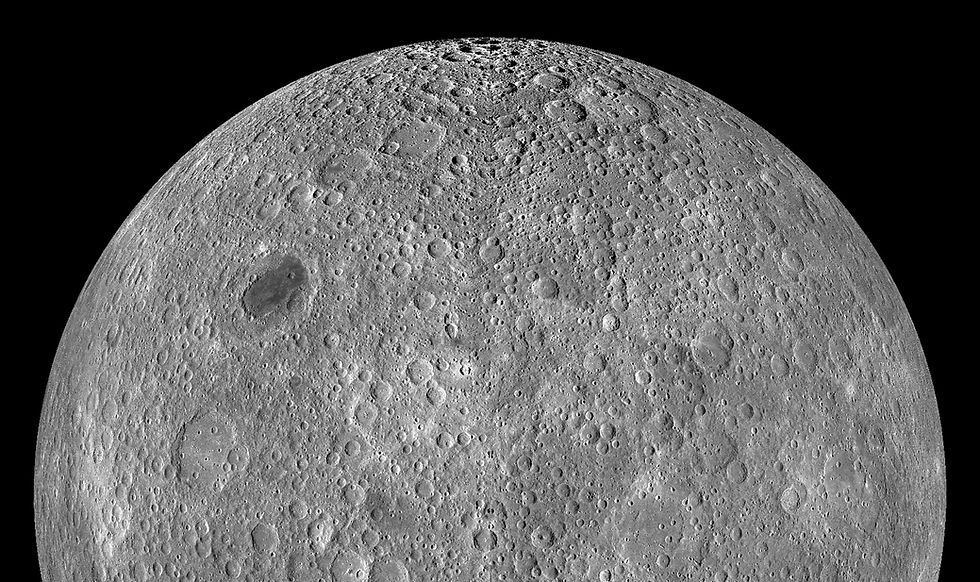

Image: NASA/GSFC/Arizona State University
Far Side of the Moon
Libration | Lunar Maria | South Pole-Aitken Basin | KREEP | LCRT
The Moon is in a tidally locked orbit around the Earth meaning that the same side always faces towards our planet. Although it wobbles slightly to reveal more of the surface at its edges, approximately 41% always remains hidden.
The far side of the moon remained a mystery until the first images were returned by the Soviet Luna 3 probe in 1959. Scientists were surprised to see a hemisphere without the familiar “man in the moon” pattern of dark lunar maria that characterises the near side. This article examines how and why the far side is different.
Finally, we list the primary advantages of siting a telescope on the moon and describe NIAC's Lunar Crater Radio Telescope (LCRT), which is the largest telescope project currently proposed for the far side.


